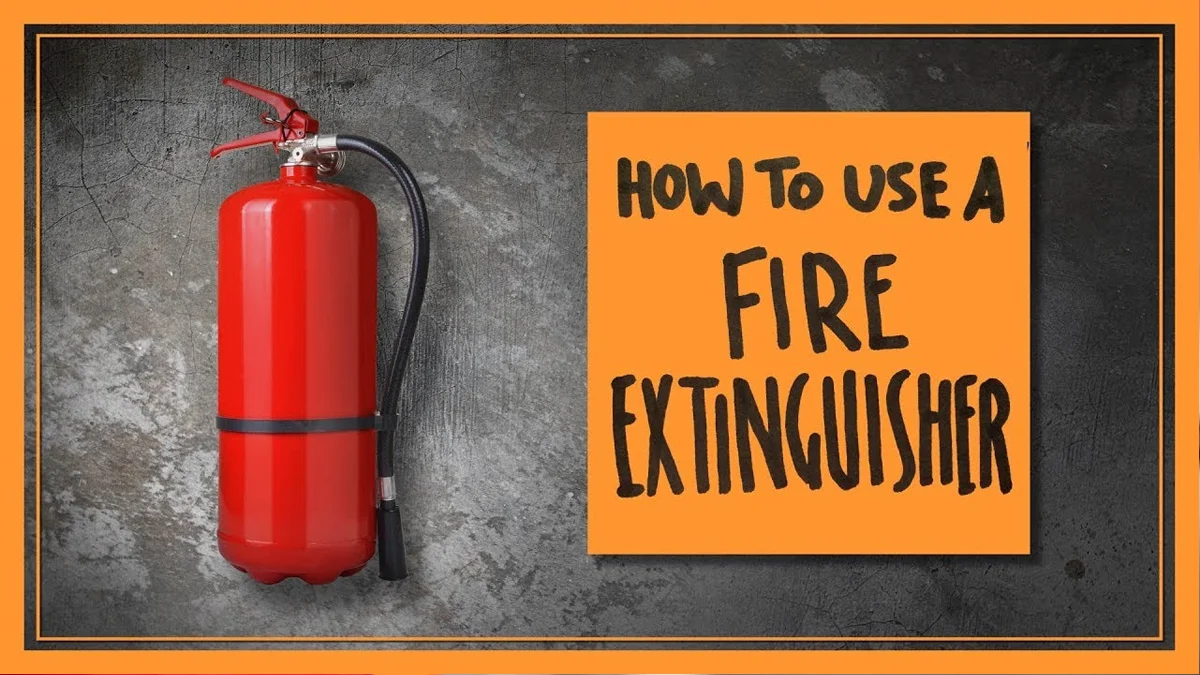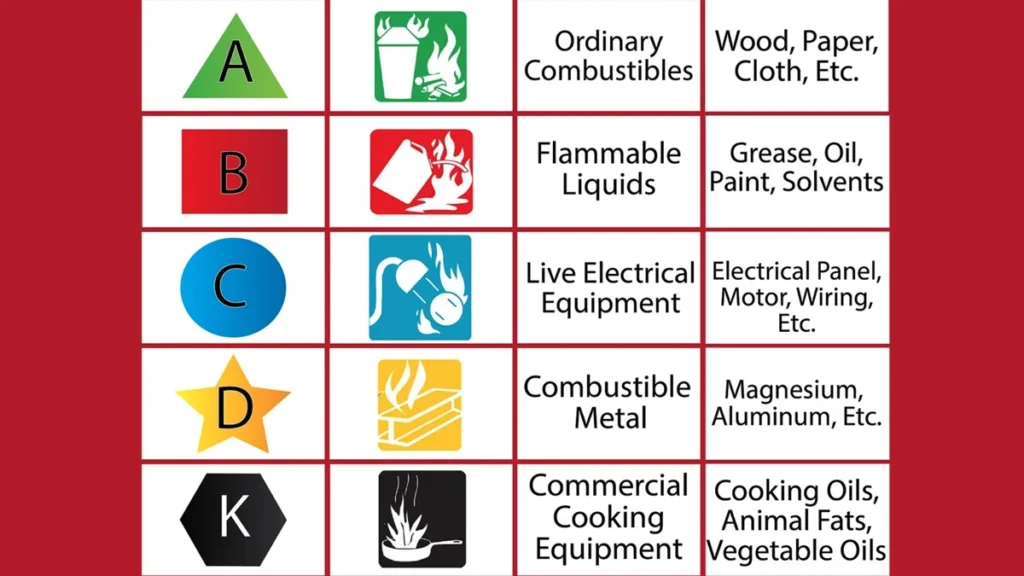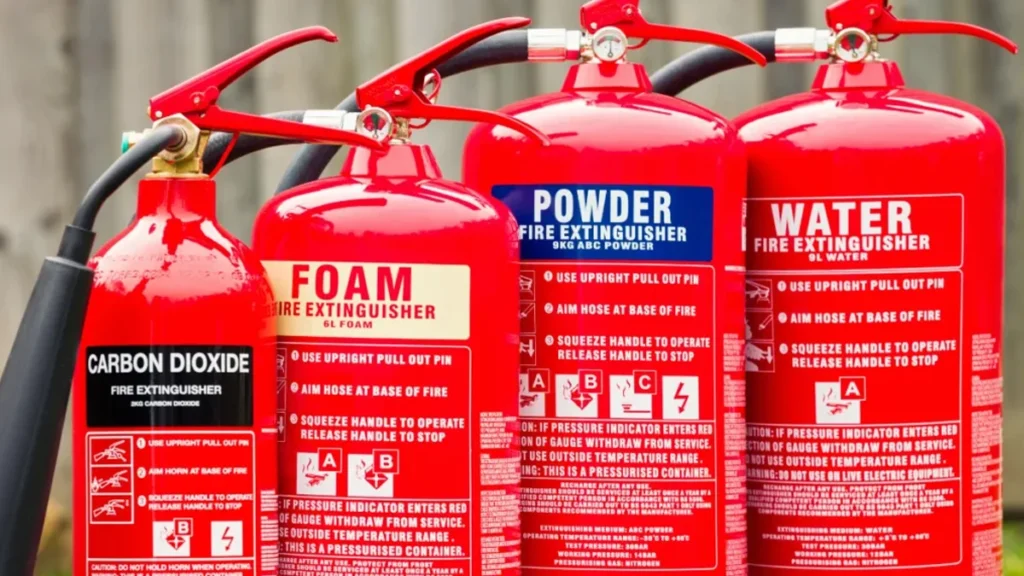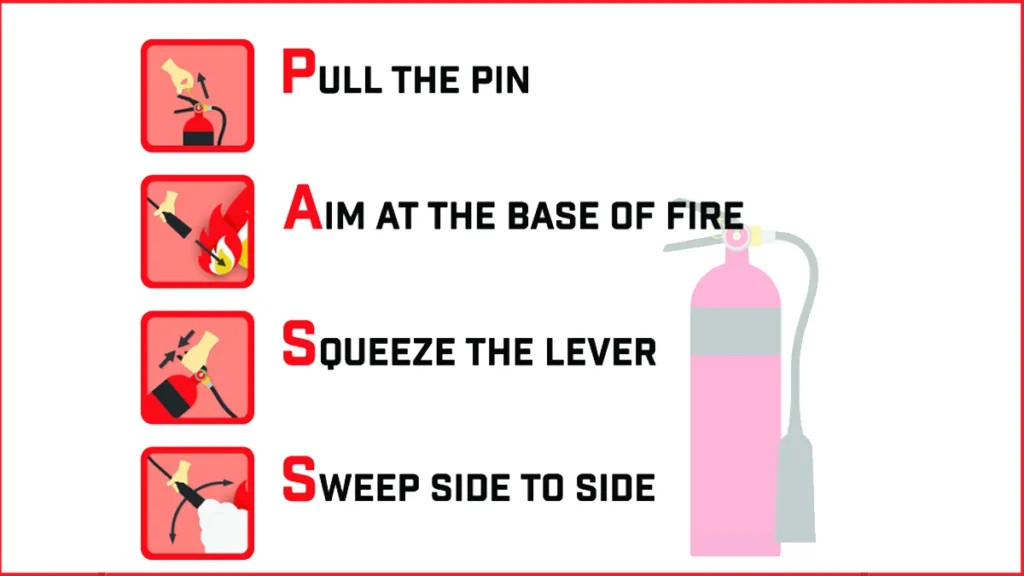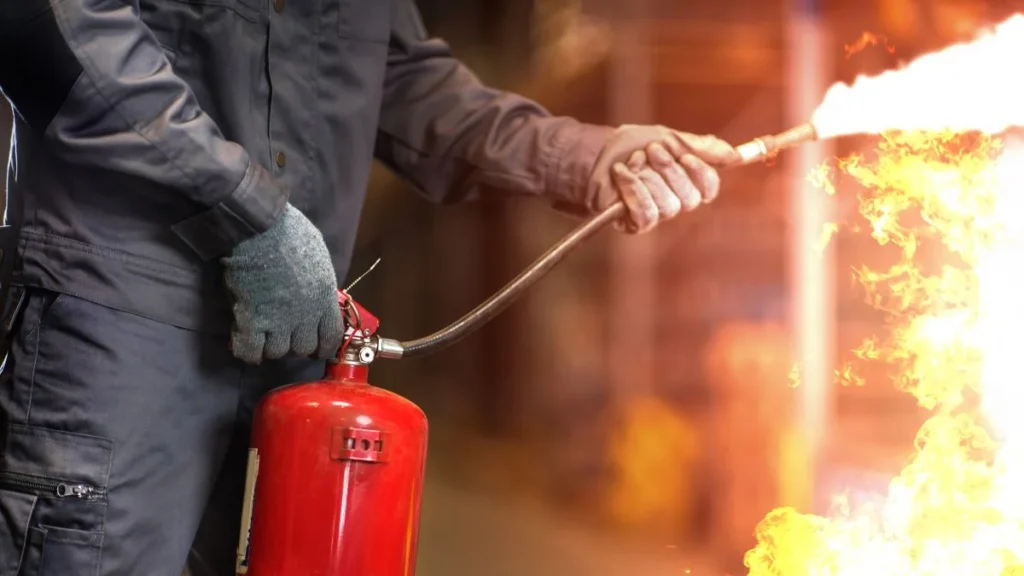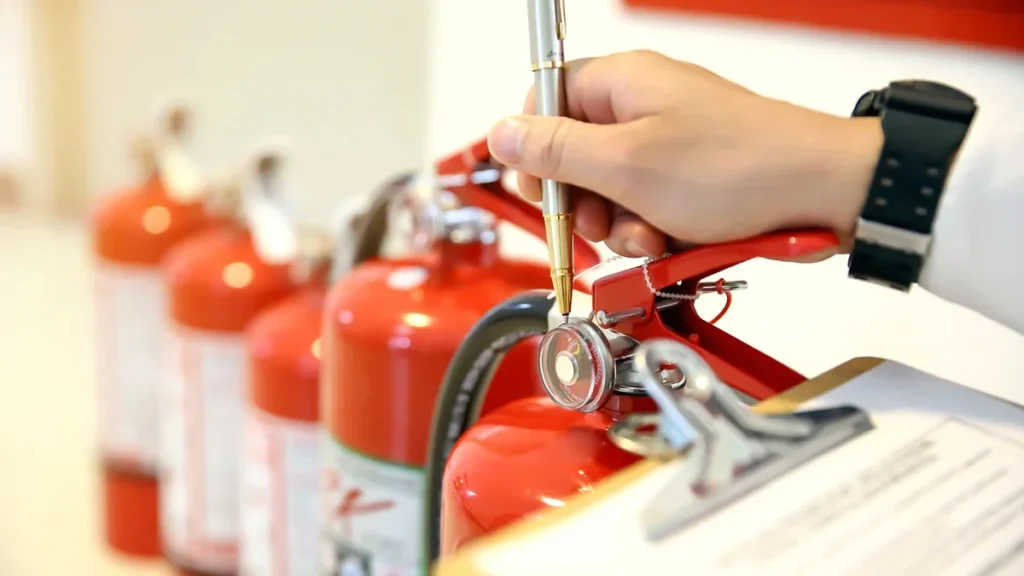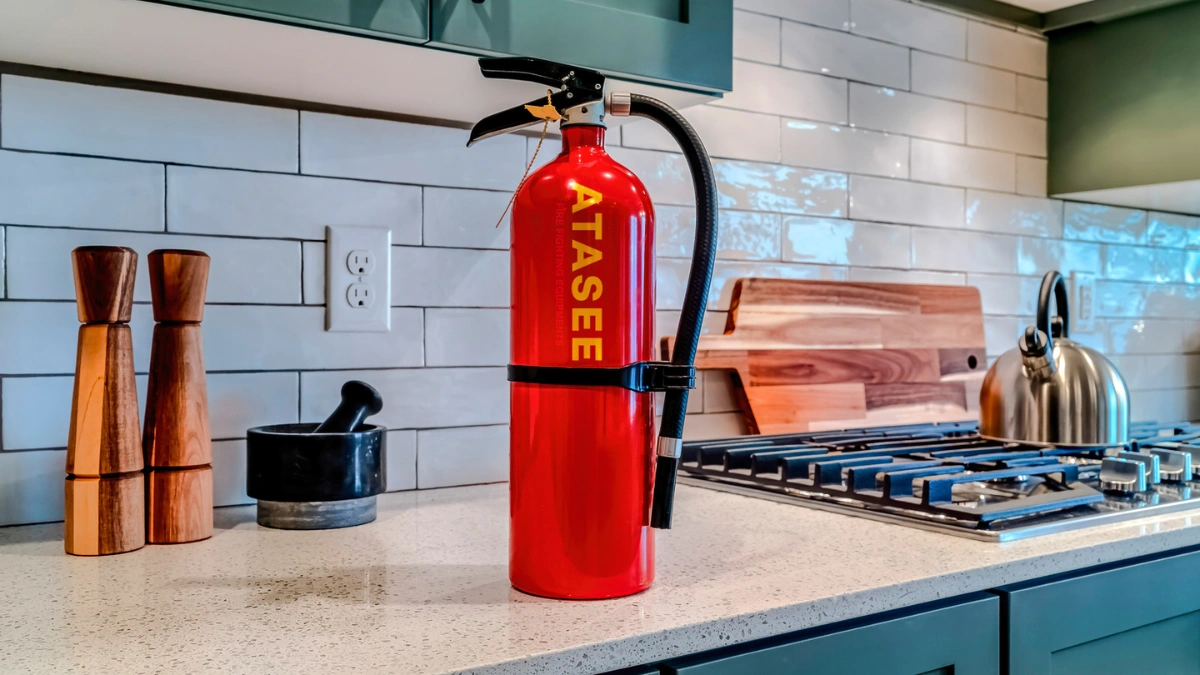
The kitchen is the heart of every home, but it is also one of the most dangerous places when it comes to fire risks. In restaurants and commercial kitchens, the risks are even higher because of the large-scale cooking, high-pressure environments, and multiple people working together.
So, having the right and best fire extinguisher for kitchen is not just a good idea, but it is a must. With the right extinguisher, a possible disaster in your kitchen can be reduced to a minor incident.
But not every fire extinguisher works in the same manner. One that extinguishes a wood or paper fire, for instance, may exacerbate a grease fire. The key to remaining safe is understanding the many sorts of fires and which extinguisher to use for each.
You will learn all you need to know about kitchen fire extinguishers from this tutorial. You’ll know which extinguishers are most useful, where to put them, and how to keep a safe cooking environment, whether you’re a restaurant owner with legal requirements or a homeowner looking to safeguard your family.
Why the Kitchen is the Most Dangerous Place
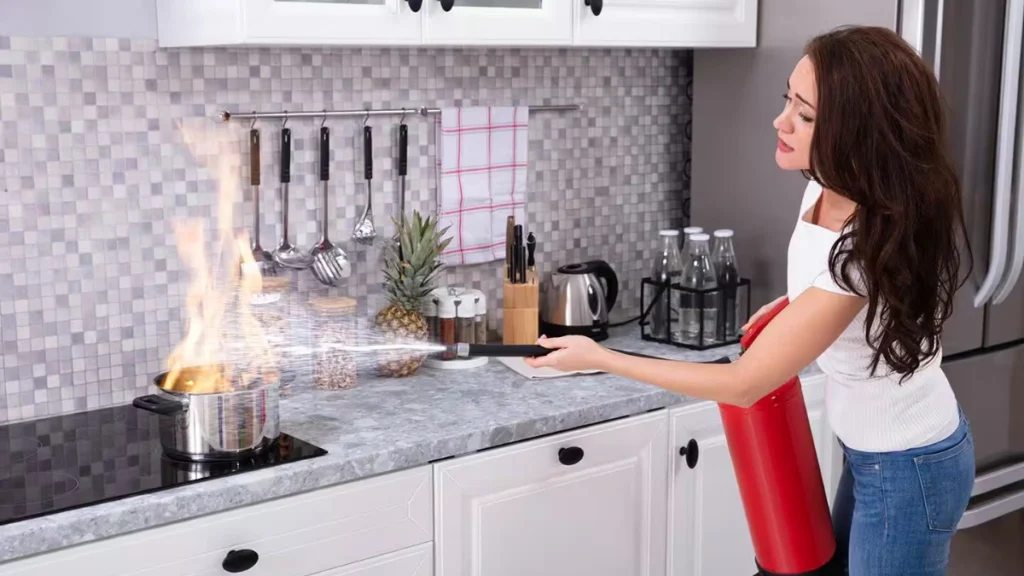
Did you know that the kitchen is the most dangerous place in your house? According to the National Fire Protection Association (NFPA), the majority of residential fires start in the kitchen, and many of these fires result in injuries or fatalities.
Between 1996 and 2016, NFPA data revealed that nearly half of all residential fires linked to injuries and deaths originated in kitchens.
The risks increase in workplaces like restaurants, schools, and hospitals. Fire risks are significantly increased by larger cooking volumes, industrial-grade fryers, and continuous use. So, every kitchen, whether residential or commercial, has to have the right fire extinguishing equipment.
5 Mistakes People Make with Fire Extinguishers and How to Avoid Them
Kitchen Fire Combustibles and Their Risks
Fats and Oils – The Cause of Class F Fires
Among the most hazardous materials in a kitchen are fats and cooking oils. Only when oils reach extremely high heat—above 340°C—do they catch fire compared to paper or wood, which burn at very low temperatures. They are categorized as Class F fires after they are started.
Class F fires are dangerous because of how intense they are. They spread quickly, burn hotter than ordinary fires, and can even restart after being extinguished. One of the most dangerous things you can do is to put water on a fire like that. The water immediately evaporates, causing steam to spread the burning oil everywhere instead of cooling the flames, transforming a small stove fire into a full-room disaster..
Most Class F fires happen becasue of negligence:
- Leaving pans unattended on the stove
- Reusing old cooking oil
- Not cleaning the grease build-up around fryers and ovens
- Ignoring smoking oils
For commercial kitchens that use deep fryers daily, the risk is constant. But even in a home kitchen, a forgotten pan of oil can ignite within minutes. This is why wet chemical extinguishers—specifically designed for oils and fats—are essential.
Wood and Cloth – Everyday Kitchen Hazards
Kitchens are filled with flammable things along with oils. If exposed to high temperatures, wooden surfaces, cutting boards, and cabinets can quickly catch fire. Similarly, leaving dishtowels, aprons, and cleaning rags close to stoves or burners increases the chance of a fire.
These kinds of fires are classified as Class A fires, which are triggered by solid combustibles like paper, cloth, and wood. Thankfully, they can be managed more easily than oil fires. A water mist extinguisher is the best option since it is safe, adaptable, and efficient against a variety of fire types, including Class A, B, C, and even some electrical fires.
Water mist versions, in contrast to conventional water extinguishers, emit a fine spray that puts out fires without splattering oil or producing hazardous splashes.
What Makes Class F Fires So Dangerous?
Class F fires have extremely high flash points and can restart, making them unique in kitchen fires. It takes temperatures of over 340°C for oils and fats to catch fire. When they do, the fire is fierce, spreading quickly across surfaces and releasing dense black smoke.
The process of dousing a grease fire with water is among the most deadly mistakes anyone can make. The water immediately vaporizes, sending droplets of flaming oil over the kitchen rather than putting out the flames. This enhances the possibility of severe burns or explosions and makes the fire uncontrollable.
Additionally, these fires are unyielding. If the fuel stays hot enough, the flames will frequently rekindle even if they are momentarily extinguished. For this reason, a suitable Class F fire extinguisher is essential. This is why having a proper Class F fire extinguisher is critical—it doesn’t just smother the flames but also cools the oils, preventing reignition.
Features of a Class F Fire Extinguisher
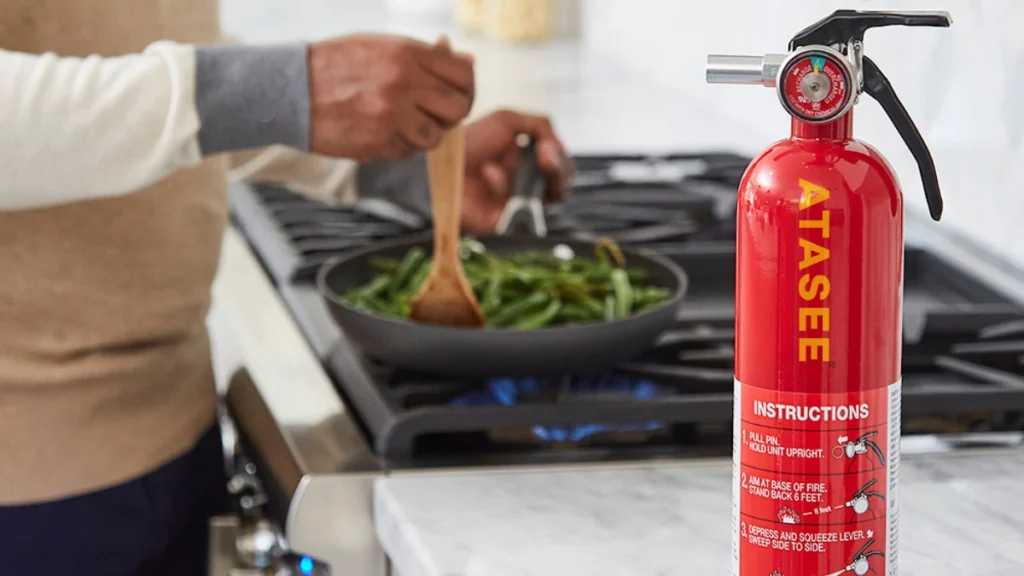
So what is the difference between a Class F fire extinguisher? These extinguishers are filled with a moist chemical solution based on potassium, as opposed to water or foam. This is how it works:
1. Saponification Reaction: When potassium and heated oil combine, a soapy foam is produced that protects the fire from oxygen.
2. Preventing Reignition: The chemical coating prevents the fire from starting again by remaining on the oil surface.
Other important characteristics are:
- Long reach: Allows you to safely combat flames from a distance. * Wide spray pattern: Perfect for covering big fryer surfaces.
- Low pressure: Avoids hot oil splashing back at the user.
These extinguishers can be easily identified in an emergency since they are usually labelled with a bright yellow colour. They are essential for kitchens of all sizes because many types are also sufficiently flexible to manage Class A and Class B fires.
Where Should Fire Extinguishers Be Installed in the Kitchen?
The place of placement of the fire extinguisher is just as important as knowing which one to buy. Always keep a kitchen extinguisher close at hand, but not so close to the stove or fryer that you would have to risk wading into flames to get to it. It is generally advised to place one within 30 feet of your main cooking space.
Visibility is yet another important factor. You don’t want to waste time looking in case of a fire. It works best when placed on a wall or kept in a cabinet close to the exit door. This allows you to try to control the fire while leaving if the flames get too big.
Common mistakes are hiding extinguishers behind clutter, placing them on the floor where they can be knocked over, or storing them so close to the stove that they’re inaccessible in a blaze. The safest setup is on a bracket or stand, about 1 meter away from cooking appliances, and at a height where anyone can grab it quickly.
How Many Fire Extinguishers Do You Need?
Fire extinguishers depend on whether you’re protecting a home kitchen or a commercial kitchen.
- Domestic kitchens: Usually, one extinguisher is enough—a Class F wet chemical extinguisher for oil and fat fires. Pairing it with a small water mist extinguisher adds an extra layer of safety.
- Commercial kitchens: Because of the larger risk, at least two extinguishers are recommended:
- One designed for Class F fires (oils and fats).
- One multi-purpose unit for Class A, B, and C fires.
By having both, you’re covered for the most common kitchen hazards from burning cloths to explosive grease fires. It’s not just about safety; in restaurants, hotels, or schools, it’s also a legal requirement to meet fire safety regulations.
How we can prevent home kitchen from fire
Preventative Steps for Home Kitchens are;
Most kitchen fires start with simple mistakes like leaving food unattended, forgetting the oven is on, or ignoring grease buildup. A few precautions can make your kitchen much safer when we apply regular:
- Always stay nearby when cooking, especially when frying or grilling.
- Keep stovetops and counters free of oil spills and food debris.
- Store flammable items like towels, oven mitts, and curtains away from burners.
- Check electrical appliances regularly and unplug them when not in use.
- Teach family members, especially children, the basics of fire safety.
Having the right fire extinguisher is important, but prevention is your first line of defence. A clean, organized kitchen greatly reduces the chances of a fire starting in the first place.
Fire Safety in Commercial Kitchens
Restaurants, school cafeterias, and hotel kitchens face unique challenges at fire safety time. Because many cooks work under pressure, large fryers full of oil, and constant activity create the perfect storm for fire risks. Negligence, even for a few seconds, can cause a fire.
For these environments, fire safety isn’t optional, it’s a legal and moral responsibility. Business owners must ensure that:
- Staff are properly trained in using extinguishers and fire blankets.
- Fire alarms and suppression systems are installed and regularly tested.
- Emergency exits remain clear at all times.
- Regular cleaning schedules are followed to remove grease and oil buildup.
By investing in the right fire extinguisher, wet chemical extinguishers, water mist units, and suppression systems commercial kitchens can stay compliant with safety laws while protecting both staff and customers.
Kitchen Fire Safety Checklist
Following this easy checklist can help you stay on top of safety precautions, which can be a bit stressful.
- a water mist extinguisher for extra protection against solid and electrical fires.
- Place a fire blanket near cooking stations, but not directly above or behind the stove.
- Turn pot handles inward to avoid accidental spills.
- Keep loose clothing and flammable fabrics away from burners.
- Regularly clean hoods, vents, and fryers to reduce grease buildup.
- Train family members (or staff) on how to use an extinguisher safely.
- Test alarms and extinguishers periodically to ensure they’re in working order. Install smoke and heat detectors in and around the kitchen.
- Keep at least one Class F fire extinguisher within 30 feet of the cooking area.
This checklist is easy to follow and, if applied consistently, will significantly lower the chances of a devastating fire in any kitchen.
Fire Safety Tools Every Kitchen Should Have
Heat and Smoke Alarms
Every kitchen should have an early-warning system for fire safety. While smoke detectors are essential, they aren’t always reliable in kitchens since normal cooking often creates smoke. That’s where heat alarms come in. Instead of reacting to smoke, they respond to rapid rises in temperature—making them perfect for kitchens. Ideally, your setup should include both smoke and heat alarms, linked together for maximum protection.
Fire Blankets
A fire blanket is one of the simplest yet most effective safety tools for small fires. They work by smothering flames, cutting off oxygen immediately. Fire blankets are particularly useful for clothing fires or pan fires where oil hasn’t spread. The key is placement—keep them close to the cooking area but never in a spot where you’d have to reach over flames to grab them.
Kitchen Suppression Systems
For commercial kitchens, a fire suppression system offers constant, automated protection. These systems are installed directly above stoves and fryers. When triggered, they release a wet chemical agent that smothers flames instantly. Depending on the type, some systems may require room integrity testing to ensure the agent is contained effectively. Though they require an upfront investment, they provide peace of mind by offering 24/7 protection.
Industries That Require Commercial Kitchens
Commercial kitchens aren’t limited to restaurants. They’re found in many industries, each facing its own fire risks:
- Schools and colleges – high-volume cooking daily.
- Hospitals and nursing homes – constant food preparation for patients.
- Hotels and hostels – serving guests around the clock.
- Shopping centers and cruise ships – multiple kitchens running at once.
All of these environments demand strong fire protection systems, trained staff, and properly placed extinguishers to minimize risks.
Conclusion:
Whether at home or in a busy restaurant, the kitchen is one of the highest-risk areas for fire. A Class F wet chemical extinguisher is the best choice for tackling oil and fat fires, while a water mist extinguisher provides extra safety for solid and electrical fires. For businesses, adding suppression systems and fire blankets strengthens protection even further.
Keeping the kitchen tidy, putting extinguishers in easily accessible locations, and teaching everyone about the basics of fire safety are all important things of preparation. Although fires can start in a matter of seconds, they can be put out before they spread if you have the right equipment and knowledge.
People Also Ask
1. What type of fire extinguisher is best for kitchens?
A Class F wet chemical extinguisher is best for oil and fat fires for the kitchen. Pairing it with a water mist extinguisher covers other fire types.
2. Can I use water on a kitchen fire?
No. You can not use water on a kitchen fire because pouring water on oil or grease fires will make them worse by spreading burning oil.
3. How often should kitchen fire extinguishers be checked?
We should always use kitchen fire extinguishers at least once a year for servicing, with monthly visual checks to ensure they’re not damaged or blocked.
4. What’s the difference between Class A and Class F fires?
Class A fires involve solid combustibles like wood or cloth.
Class F fires involve cooking oils and fats, which burn at much higher temperatures.
5. Do restaurants need suppression systems?
Yes, restaurants need suppression systems, because the most commercial kitchens benefit greatly from suppression systems when there are higher fire risks.

